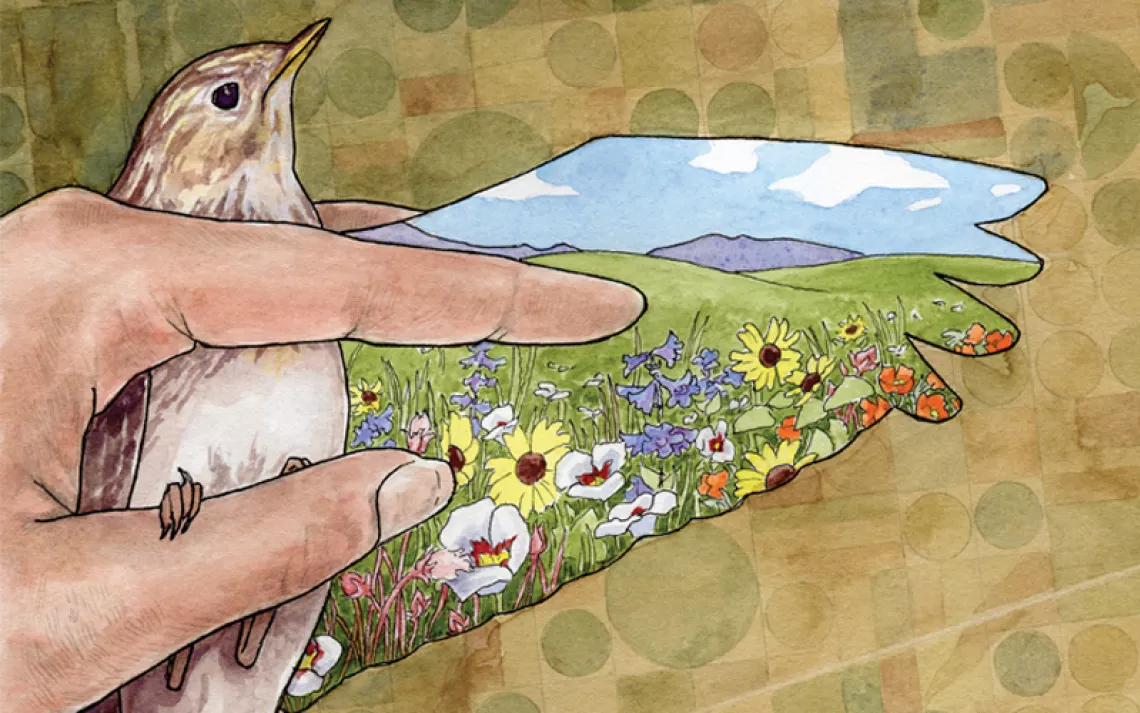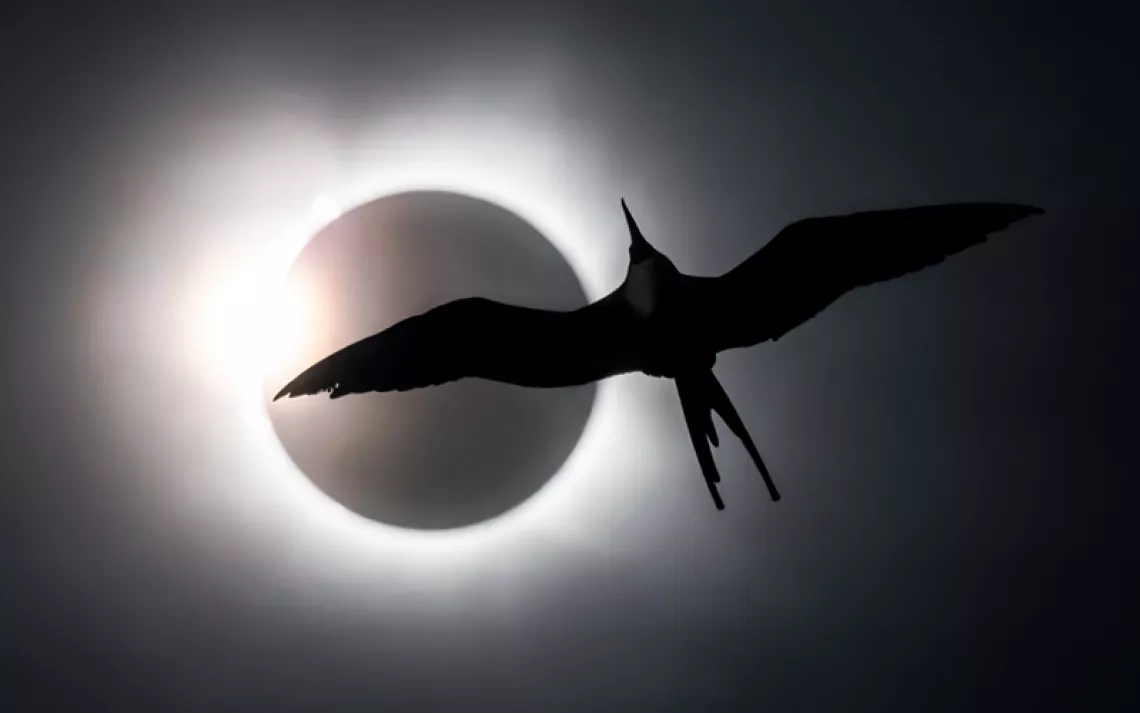4 Digital Tools to Help Birders Learn, Locate, ID, and Connect
Because spring is about to take flight

Barn swallows
|Photos courtesy of Orietta Candela
In North America, spring is just around the corner, which means migratory birds are starting their journeys north to summer nesting and breeding grounds. Ruby-throated hummingbirds are gearing up to fly an impressive 500 miles north, fluttering nonstop across the Gulf of Mexico. Red knots will travel more than 9,000 miles while undergoing significant physiological changes, and large swaths of migrating raptors will grace the skies above. Here’s everything you need to learn about, identify, and locate birds this spring—and how to connect with fellow birders too. The best part is, all four of the following birding tools are available at your fingertips.
Track and Learn About Birds
eBird
Hoping to track birds in the service of science? It’s as awesome as it sounds. eBird turns your day-to-day birding experiences into legitimate data that scientists who study bird populations, migration, and breeding can use in their research. It’s as simple as creating an account and entering the name and quantities of the species spotted via the eBird mobile app.
eBird’s more comprehensive online platform is the best resource to hone your birding skills, plan for a birding trip (whether abroad or down the street), and explore the data collected by birders and scientists. The data (which includes photographs, video, and audio) is crowdsourced by users worldwide, and confirmed by eBird Reviewers, who are assigned to specific regions, and tasked with evaluating between 20 and 100 entries each day, depending on the season. eBird Reviewers ensure entries meet certain scientific standards, and authenticate all that supplied data. eBird reviewer Tim Carney recommends that new eBird users “participate, and be willing to learn the hard way”—sound advice from someone who himself learned how to use eBird with the help of an eBird reviewer who encouraged him to enter sufficient field notes to support his observations. Carney also recommends that new users participate in the eBird Essentials course and join the Facebook eBird Discussion Group.
The eBird mobile app, a simplified version of the online platform geared specifically toward data entry, makes community science accessible to anyone with a mobile device. Users can manually or automatically track their location, distance, and time spent birding. The Merlin app (see below), which conveniently assists in identifying birds in real time without the hassle of carrying around a field guide, is integrated into the eBird app.

Male tree swallow
Identify Birds
Merlin
Merlin is the ideal app for identifying feathered friends, as it’s geared toward birders of all levels. For instance, the app uses prompts to help beginners narrow down a bird’s identity via guided questions and visual answer choices. When a user is asked, “What size was the bird?”, for example, the app displays multiple choice options; when a user enters a bird’s primary color, it offers visual swatches; and, finally, when prompted to enter information about the mystery bird’s behavior, users are offered several detailed choices. Once all questions have been answered, a list of possible birds is displayed. Cool, right? But know that this app’s Photo Identification (ID) feature is perhaps even more exciting.
Merlin Photo ID allows users to import their own photograph, or snap a photo of a bird, in real time with their mobile device. The app then analyzes the image and displays a list of photographs featuring various birds matching the submitted photograph.
Then there’s Merlin’s in-the-hand field guide, which displays a list of likely birds based on the time of year and the user’s location, along with a bar graph, which shows, in detail, the months during which specific bird breeds are most likely to be spotted. Users can also search for specific birds, read about them, examine several images, view distribution maps (showing exactly where in the world specific bird varieties tend to be seen), and not only listen to what a bird sounds like, but check out a visual representation of a bird’s song in spectogram form.

Great blue heron
Find Birds
BirdsEye Bird Finding App
Not sure where to bird, and don’t have time to surf the eBird website? The Birds in the Hand crew developed the BirdsEye Bird Finding app just for this reason—it integrates maps and eBird data, and it’s simple to use: open the app, find your location on its map, read about a nearby hotspot (displayed as a red dot), and get directions. “We wanted birders to easily find the birds around them, no matter where they are,” says Amanda Grennell, BirdsEye editor. “If there are birds close to you that you've never seen, our app will let you know where they are and when they were last spotted.” This app takes the thinking out of where to bird, and uses trusted eBird information to send enthusiasts birds’ way.
Kathy Calvert, Frederick County coordinator for the Maryland-DC Breeding Bird Atlas, uses the app whenever she's in an unfamiliar area. “I like it because in addition to telling me what’s close, I can get directions to that place, right in the app.” The BirdsEye Birding Finding app is an essential digital tool for birders with hectic work schedules, and for multitaskers (like parents) who want to spend less time planning outside time, and spend more time actually outside.

Osprey
Flock Together
Some of the best places to liaise with other bird enthusiasts? Facebook groups. The American Birding Association (ABA) created three such groups to connect birders worldwide: American Birding Association; ABA Birds and Birding; and What’s This Bird?. “We believe that a world with more birders is a better world,” says ABA president Jeffrey Gordon. “Facebook helps up work toward our mission of inspiring all people to enjoy and protect wild birds.”
The American Birding Association Facebook group is an excellent forum for sharing bird-related news and opinions, and for offering insight into the happenings of the birding world. It’s described as a “a cozy living room or friendly tavern where birders can gather to talk.” ABA Birds and Birding is for sharing bird photographs, discussing bird behavior, and sharing stories about personal birding experiences. The most exciting of the three is What’s This Bird? An open forum for individuals uncertain about the identification of a particular bird, this group allows the birding community to come together to identify and locate rare birds that might have otherwise gone unnoticed.
Beyond Facebook groups, the ABA offers the American Birding Podcast, which brings birders together to discuss birds, travel, conservation, birding news, rare sightings, and more.
Here’s hoping your birding game really takes flight this spring.
 The Magazine of The Sierra Club
The Magazine of The Sierra Club



